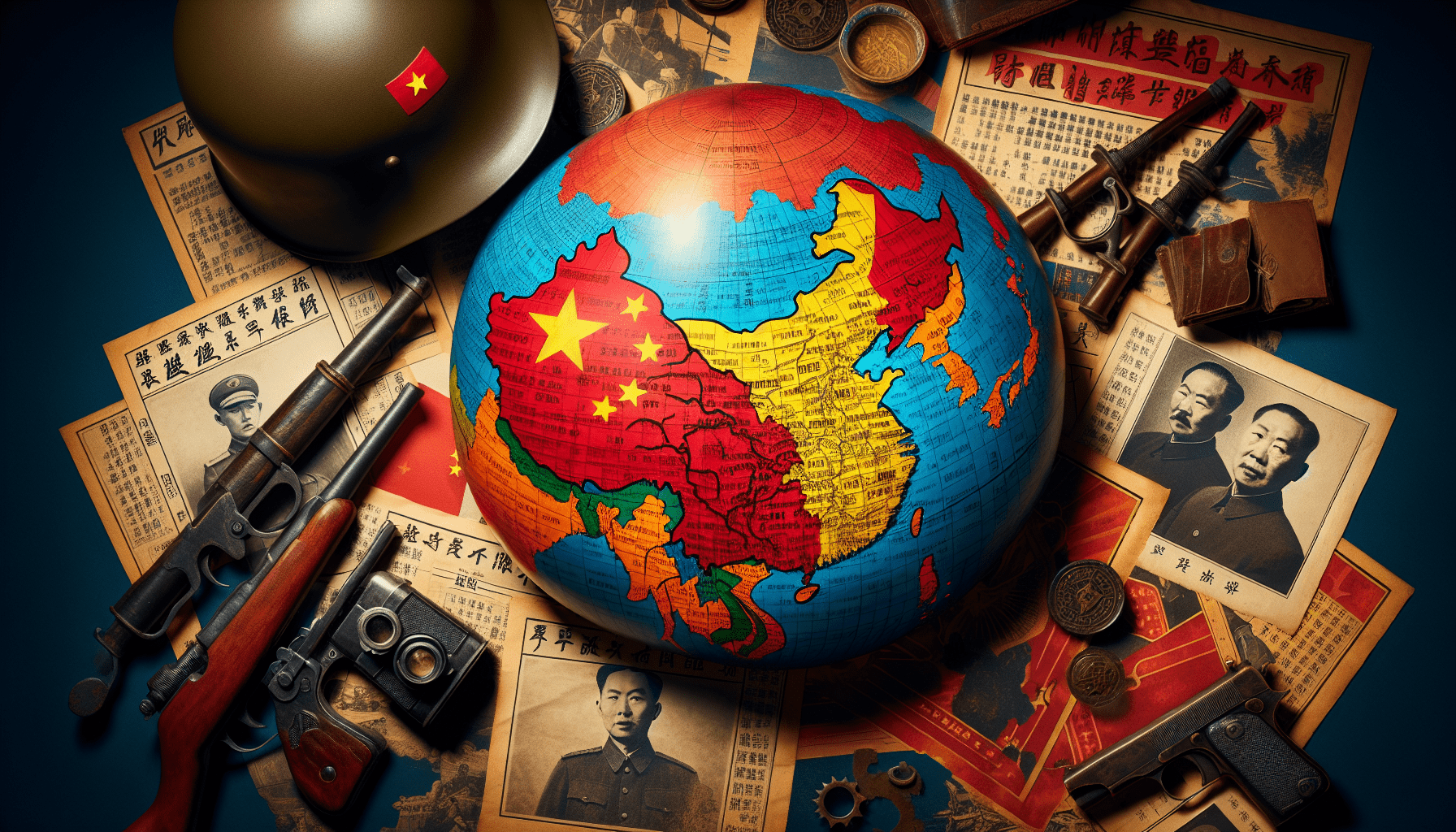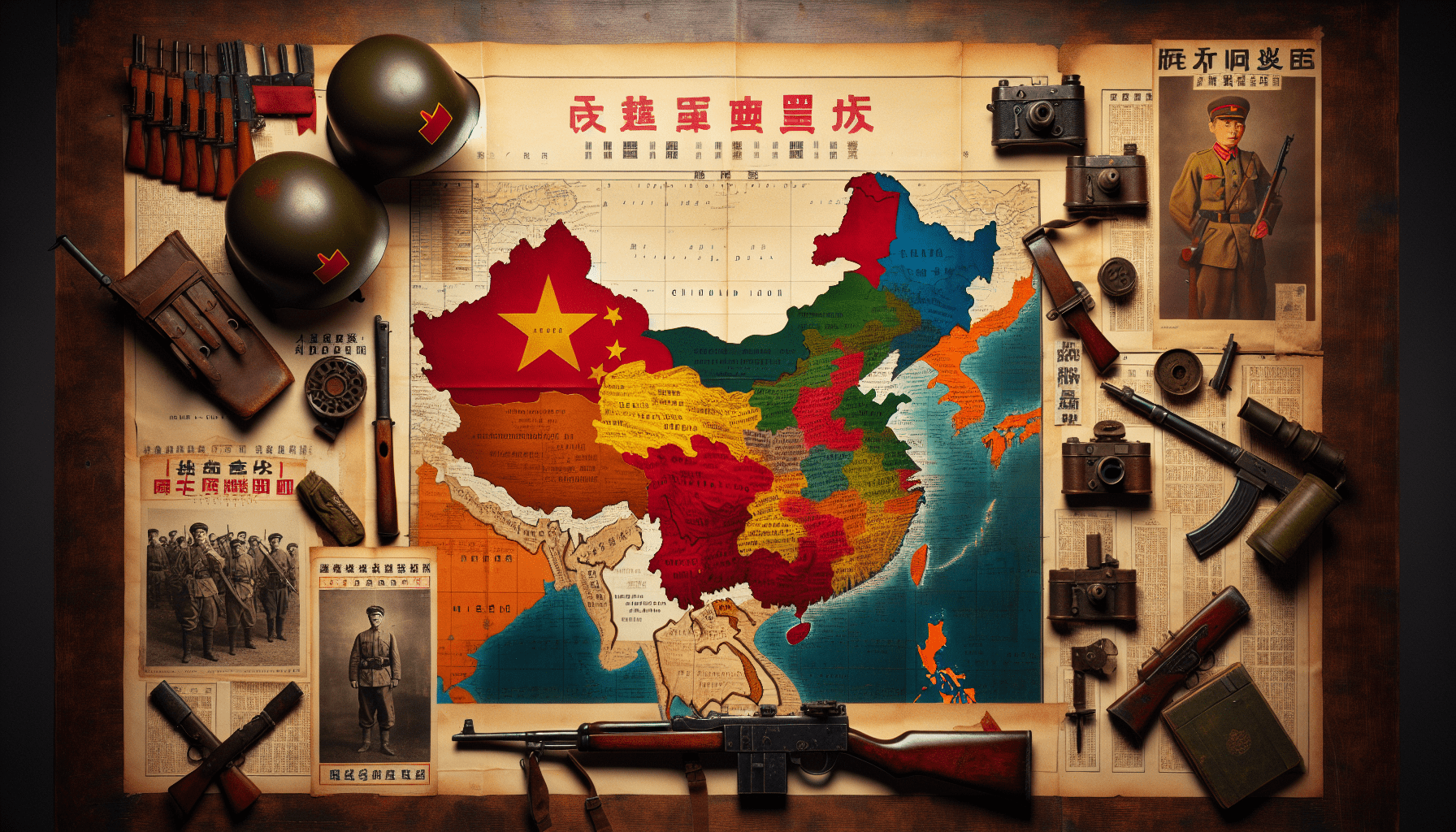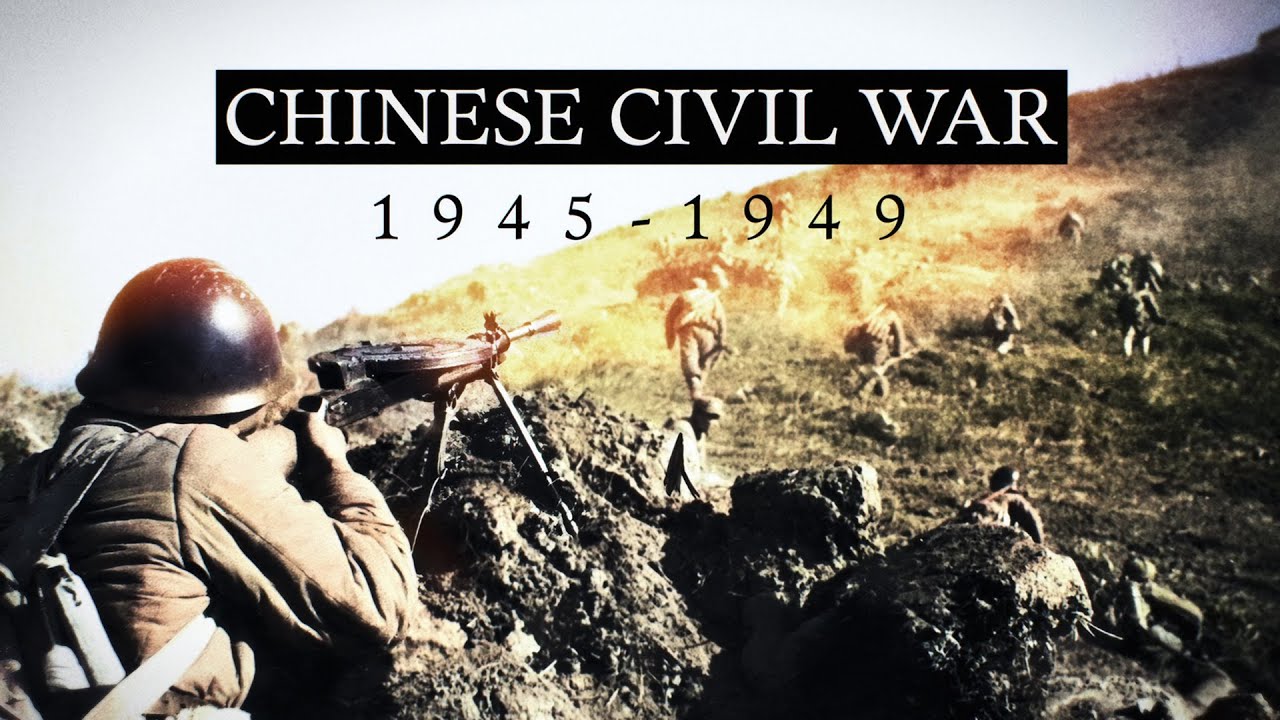The conclusion of World War II in 1945 marked a pivotal moment in Chinese history, igniting the historical tensions between the Nationalists, led by Chiang Kai-Shek, and the Communists, under Mao Zedong. With the Japanese surrender, the temporary collaboration against a common enemy quickly unraveled, leading to renewed hostilities that would characterize the Chinese Civil War from 1945 to 1949. This article reviews the complexities of this conflict, including military strategies, foreign influences, and internal dynamics that shaped the battle for control in post-war China.
Throughout the narrative, one observes the contrasting approaches of the two factions: the KMT’s reliance on conventional military strategies versus the CCP’s innovative guerilla tactics aimed at gaining popular support. As the KMT sought swift victories amid growing discontent, the CCP capitalized on local grievances and implemented effective reforms. The article will also explore how external powers, such as the United States and the Soviet Union, influenced the outcome of the war, ultimately culminating in the establishment of the People’s Republic of China in 1949.
End of WWII in China
Japanese surrender and its impact on China
With Japan’s surrender in September 1945, the curtain came down on World War II, yet China, a significant yet beleaguered player in this global theater, found itself staring into the abyss of an unresolved civil conflict. The cessation of hostilities did not herald a new era of peace; instead, it magnified the tensions simmering between the Nationalists, under the leadership of Chiang Kai-Shek’s Kuomintang (KMT), and the Communists, led by Mao Zedong’s Chinese Communist Party (CCP). As the dust settled on the battlefield, the implications of Japan’s defeat rippled through the Chinese political landscape, unleashing a renewed struggle for power that had been temporarily overshadowed by the larger war efforts. The KMT sought to stabilize its control and claim legitimacy as the ruling party, while the CCP, bolstered by its wartime experiences and ideological commitment to class struggle, prepared for a renewed confrontation.
Ongoing Nationalist-Communist tensions
The cessation of Japanese aggression unveiled the long-standing hostilities between the KMT and CCP that had lain dormant during World War II. Even as both factions had collaborated within a United Front against a common enemy, distrust festered beneath the surface. The KMT emerged from the war significantly weakened, grappling with corruption, economic woes, and the challenge of an untested soldier-class. On the other hand, the CCP had exploited the war to expand its influence and strengthen its military capabilities, setting the stage for an inevitable clash. The initial alignment against the Japanese had provided both sides with a fleeting sense of unity; however, the return to normalcy meant a return to the prior conflict, now even more fraught with animosity and ambition.
The political landscape post-war
The political atmosphere in post-war China was characterized by a turbulent interplay of competing ideologies and military might. The KMT’s claim to be the legitimate government was both justified and undermined by its inability to stabilize the country. Chiang Kai-Shek’s leadership faced mounting criticism, not just from his detractors in the CCP but also from disenchanted elements within Chinese society, who found the KMT’s governance increasingly bereft of integrity and direction. Conversely, the CCP capitalized on peasant discontent, presenting itself as a viable alternative that promised land reforms and independence from foreign influence. As the political landscape evolved, both factions braced for a renewed cycle of violence that would define the next several years of Chinese history.
The Opposing Forces
Nationalists (KMT) and their military strength
The Nationalists, as led by the KMT, boasted a considerable military apparatus, with troop numbers reaching approximately 4.3 million. Despite this numerical advantage, various challenges undermined their effectiveness. Much of the KMT’s military was reliant on outdated equipment and plagued by issues of morale and cohesion. The soldiers often suffered from a lack of resources and leadership, problems exacerbated by corruption within the ranks. This reliance on conventional static warfare strategies, combined with insufficient flexibility in tactics, diminished the KMT’s ability to contend with the more agile Communist forces.
Communists (CCP) and guerrilla tactics
In stark contrast to the KMT’s traditional military approach, the CCP relied heavily on guerrilla warfare tactics, which emphasized mobility, the element of surprise, and local support. With an army of approximately 900,000, the CCP understood the necessity of adapting their strategies to the terrain and the sentiments of the local populace. They operated within a framework of ideological fervor and unwavering resolve, strategically embedding themselves within rural communities to rally support. This focus on grassroots mobilization enabled them to execute effective guerrilla campaigns, ultimately allowing the CCP to destabilize KMT control in important regions.
US support for the KMT
The United States played a significant role in propping up the KMT, influenced by its anti-Communist ideology and a desire to see a strong, unified China emerge post-war. The support included military training, arms, and financial aid intended to bolster Chiang’s forces against the encroaching Communists. However, as the KMT’s weaknesses became apparent, skepticism emerged within American circles regarding the viability of their chosen ally. The growing evidence of KMT corruption and inefficiency prompted a reassessment of U.S. strategy in the region, setting the stage for an increasingly complex geopolitical landscape.
Deterioration of KMT-CCP Partnership

Initial collaboration against Japan
The partnership between the KMT and CCP initially arose as a strategic necessity in the fight against Japanese forces occupying China. This United Front was formed during a time when both factions acknowledged the existential threat posed by the Japanese invasion, compelling them to suppress their long-standing rivalries. Their cooperation facilitated some joint military operations and administrative arrangements in liberated areas; however, the collaboration was largely superficial, predicated on mutual self-interest rather than genuine trust.
Distrust and corruption within KMT
The fragility of the KMT-CCP partnership became evident as mutual distrust surfaced, fueled by contrasting ideologies and tactics. Furthermore, internal corruption within the KMT eroded public confidence, fostering resentment among the populace. Thousands of potential allies among the population viewed the KMT’s inefficacy as a betrayal. The pervasive corruption and the KMT’s failure to address widespread poverty and social injustice provided fertile ground for Communist propaganda that emphasized equity and reform.
Breakdown of cooperation post-war
The post-war period witnessed an accelerating breakdown of cooperation between the two factions, driven by competing territorial ambitions and the lure of absolute power. The KMT’s determination to reassert itself in regions previously occupied by Japan was met with fierce resistance from the CCP, which sought to solidify its hold on areas already liberated during the war. As military skirmishes erupted across various fronts, the fragile coalition established during the fight against Japan disintegrated, paving the way for renewed civil conflict.
Soviet Influence in China
Soviet occupation of Manchuria
Post-war China found itself increasingly entrapped in Cold War dynamics, particularly concerning Soviet ambitions. As Japan surrendered, the Soviet Union swiftly occupied Manchuria, further complicating the landscape of potential conflict between the KMT and CCP. The strategic importance of Manchuria—an industrial hub—meant that possession of this territory held significant implications for the strength of either faction. The Soviet presence heralded an era of heightened tensions, with both the KMT and CCP vying for control over the territory.
Impact on the civil war dynamics
The Soviet occupation of Manchuria significantly impacted the early dynamics of the civil war. While the Sino-Soviet relationship was complex, the USSR’s support for the CCP, albeit limited, signaled the beginning of Communist gains, further fracturing KMT authority. The CCP exploited this opportunity to rebuild its forces and expand its influence within the region, fostering the conditions necessary for a renewed military confrontational stance against the KMT.
Limited support for the CCP
Despite the Soviet Union’s occupation, its support for the CCP was measured and often calculated. The Soviets were primarily concerned with advancing their interests rather than unconditionally empowering the Chinese Communists. This ambivalence characterized the Sino-Soviet relationship; while Communists hoped for sustained Soviet backing, it was not guaranteed. Consequently, the CCP found itself needing to depend more on establishing grassroots support and effectively organizing within the Chinese context rather than entirely relying on foreign assistance.
US Mediation Efforts

General George Marshall’s involvement
In recognizing the escalating conflict between the KMT and CCP, the United States sought to mediate the rising tensions through the involvement of General George Marshall. His arrival in China epitomized a commitment to stabilizing the region and preserving American influence. Marshall’s mission aimed to foster dialogue and bring about a truce between the warring factions, demonstrating a U.S. willingness to support a unified China under the KMT.
Temporary truces and their failures
Despite efforts to derive a peaceful resolution, Marshall’s mediation ultimately yielded only temporary truces that failed to bridge the vast chasm of distrust between the KMT and CCP. Each agreement eroded rapidly upon implementation, revealing the factions’ fundamental inability to coexist. The KMT accused the CCP of non-compliance, while the Communists perceived KMT maneuvers as contradictory to previously agreed terms. The frustration from failed negotiations only intensified the cycle of violence.
US interests and concerns
The United States’ focus on stabilizing China emerged from broader geopolitical considerations, particularly regarding Communist expansion in Asia. However, these interests were increasingly at odds with the realities of Chinese political dynamics. As it became clear that the KMT’s central government was losing legitimacy and ground to the CCP, American support was simultaneously under scrutiny back home due to rising concerns over both economic mismanagement in China and the KMT’s capacity for effective governance.
Military Strategies Adopted
KMT’s conventional military approach
The KMT’s reliance on conventional military strategies presented limitations that undercut their effectiveness in the civil war environment. The KMT, operating within a more traditional military framework, emphasized large-scale territorial defenses and concentrated assaults to reclaim territory lost to the CCP. However, this approach inadequately adapted to the realities of a guerrilla war, leaving exposed flanks that could be exploited by a more agile opponent. The drive for a quick military resolution neglected the need for infrastructural and political reform within KMT-held regions.
CCP’s flexible, guerrilla warfare tactics
Contrasting sharply with the KMT’s rigid strategies, the CCP thrived on flexible guerrilla warfare tactics that allowed for rapid adaptation to changing circumstances. Central to their approach was the emphasis on local support, which facilitated guerrilla actions against enemy outposts. Moreover, the CCP capitalized on their ability to blend with the civilian population, employing propaganda to gain the hearts and minds of the populace. This adaptability proved essential in conducting operations that disrupted KMT efforts while preserving their own combat effectiveness.
Importance of rural support for the CCP
Central to the CCP’s success was its deft navigation of rural support systems. Facilitating land reforms and promising equity resonated with disillusioned peasants who had historically borne the brunt of KMT policies. By establishing a network of local militias and engaging in targeted outreach, the CCP effectively entrenched its influence in the countryside. This grassroots integration not only built resistance against KMT forces but also fostered a robust base from which to launch offensives, directly contributing to their eventual dominance in the civil war.
Early Skirmishes and Clashes

Conflict breaks out in Manchuria
The first shots of renewed conflict were heard in Manchuria, where tensions escalated into skirmishes as KMT and CCP forces vied for control over strategically valuable regions. The region’s industrial resources were pivotal to both factions, making Manchuria a flashpoint for violent confrontations. The KMT’s ambitions to reestablish its authority clashed with the CCP’s commitment to expand its revolutionary agenda, resulting in a violent mosaic of conflict.
KMT’s territorial ambitions
The KMT’s efforts to assert territorial control in Manchuria were underscored by a complex web of military engagements and strategic deployments. As Chiang sought to push back against the CCP’s advances, KMT forces aimed to reclaim lost ground from Japanese occupation. However, internal disorganization and logistical miscalculations hindered these ambitions, undermining their strategic objectives.
CCP’s strategies to expand presence
The CCP, recognizing the importance of Manchuria as a strategic site of influence, enacted a concerted strategy aimed at expanding its presence. Utilizing guerrilla tactics and capitalizing on local support, the CCP was able to incrementally improve their hold over the area, establishing bases through which they could launch offensives against KMT positions. Their strategic engagements targeted critical supply routes and communication lines, drastically complicating KMT efforts to consolidate its gains.
KMT Offensives and Territorial Gains
June 1946 General Offensive details
The KMT’s June 1946 General Offensive represented a structured attempt to recapture lost territories and assert dominance over the CCP. This systematic campaign marked a critical juncture in the civil war, as Chiang mobilized his forces with the intent of delivering a decisive blow to CCP strongholds. Overconfidence in military might, however, overshadowed the complexities involved in such an expansive military engagement.
Significant advances by KMT
In the early phases of the General Offensive, the KMT made notable territorial gains, capturing critical locations throughout Manchuria and consolidating control in strategically relevant areas. This initial success revived hopes within the KMT for a potential victory. Nevertheless, underlying logistical challenges and miscommunication within the ranks began to surface, foreshadowing the difficulties that lay ahead.
CCP’s resilience in face of KMT attacks
Despite facing overwhelming forces, the CCP demonstrated remarkable resilience against KMT offensives. Utilizing their guerrilla warfare tactics, the Communists executed localized counteroffensives and raiding parties that effectively disrupted KMT supply lines and efforts to establish secure positions. This resilience manifesting in effective guerrilla operations sustained their fight, and the erosion of KMT gains became apparent as the conflict continued.
Setbacks and Resilience of the CCP
Counteractions against KMT forces
By late 1946, the CCP found itself recalibrating its strategies to counter KMT offensives, launching campaigns designed to exploit the weaknesses in KMT operations. Using their nuanced understanding of terrain and local support, the Communists mounted successful counterattacks that targeted vulnerable points within KMT defenses. Activities included harassment of supply routes and coordinated strikes that significantly hindered KMT momentum.
Challenges faced by KMT in maintaining gains
Despite initial territorial successes, the KMT faced mounting obstacles as it struggled to maintain its acquired territories. Internal disorganization, prevalent corruption, and widespread discontent among troops diminished their capacity to act effectively against CCP strategies. The inability to generate sustained logistical support or sufficient popular backing meant capturing territory rarely translated into lasting control or stability.
Growing hostilities leading to further conflicts
The increasing hostilities between the two factions fueled the cycle of violence that marked the civil war. As KMT leaders called for more aggressive military offensives, skirmishes intensified and spread across multiple regions. This escalating conflict spiraled out of control, as violent confrontations led to escalating brutality on both sides. The historical grievances between the two factions ensured that the civil struggle was marked by mutual hostility.
Conclusion
Summary of the Chinese Civil War outcome
The Chinese Civil War reached its denouement on October 1, 1949, with Mao Zedong’s proclamation of the People’s Republic of China (PRC). This outcome irrevocably altered the trajectory of Chinese history, culminating in the establishment of a Communist state that would face myriad challenges in governance. The KMT’s defeat cemented a bifurcated China, with the Nationalists retreating to Taiwan and establishing a government-in-exile that shaped the geopolitical landscape for years to come.
Long-term consequences for China and Taiwan
The ramifications of the civil war reverberated through the spans of Chinese history, leading to a protracted estrangement between the mainland and Taiwan. The KMT’s retreat solidified Taiwan as a bastion of anti-Communism during the subsequent Cold War era, with international relations and U.S. foreign policy influenced by the split. The disparate trajectories of the two regions have continued to shape economic, political, and social landscapes in distinct ways to this day.
Reflection on historical lessons
The tumultuous events surrounding the end of World War II and the ensuing Chinese Civil War offer vital insights into the complexities of power dynamics, ideological struggle, and the fragility of governance in times of crisis. As students of history, you are reminded that the lessons gleaned from these conflicts continue to resonate today, serving as a testament to the interplay between ideology, strategy, and the people’s will. The ongoing dialogue about China’s past retains a profound relevance in the context of contemporary global politics, highlighting the necessity for understanding historical legacies as they inform future trajectories.
